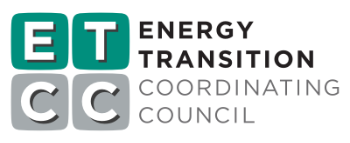Project Info
ACTIVE
Project Title
Humidity Control for Indoor Farms
Project Number ET24SWE0064 Organization SWE (Statewide Electric ETP) End-use Process Loads Sector Agricultural Project Year(s) 2024 - 2026Description
BackgroundThis project addresses the process dehumidification and cooling loads that account for approximately 40% energy consumption in indoor farms with energy efficient lighting. Indoors farms are defined as enclosed and insulated facilities where the lighting and environment are completely controlled. In these well-insulated facilities, heat is generated by the lights, which requires cooling. Indoor farms also have high dehumidification requirements due to the water transpiration from the plants. When the lights are running twelve hours a day, the latent to total cooling ratio is approximately 0.75. When the lights are off twelve hours a day, the overall loads are reduced, and the latent to total cooling ratio is nearly 1.0.Baseline MethodThe traditional HVAC design for indoor growing is to use high efficiency dehumidifiers inside the grow room. The dehumidifiers remove water and reject heat to the space. This adds heat to the space, adding to the heat generated by the lights and by combustion-based CO2 generators. The heat is then removed and rejected outdoors with a traditional cooling system, such as a packaged roof top unit. This requires two pieces of equipment to accomplish the dehumidification, each with their own fans and refrigeration systems. There are inefficiencies associated with using multiple heat transfer systems.Commercially Available Emerging TechnologyThis project will measure the efficiency and performance of a commercially available, all-electric dehumidification and cooling system called “MSP Technology” installed in an operational indoor growing facility. The principal of operation for MSP Technology is as follows (see diagram in attached case study for more information):Air from the indoor farm enters the supply side of the plate air-to-air heat exchanger and is sensibly cooled in this process.The air exiting the air-to-air heat exchanger passes over a cooling coil served by refrigerant or chilled water. The air is dehumidified.The air leaving the cooling coil enters the exhaust side of the plate air-to-air heat exchanger. It cools the air stream in #1 and then exhausts back to the grow room. The result is that energy from the cooling coil is being used almost entirely for dehumidification, which is the primary load. The latent to total cooling ratio can also be controlled (increasing the fan speed decreases the latent to total cooling ratio). Chilled water or refrigerant is supplied to the cooling coil with a chiller or condensing unit that then rejects the heat outside. No heat is rejected indoors. The overall energy savings is projected to be 30 to 65% compared to typical methods.MSP Technology is manufactured by KCC Companies and is used by a small number of customers in the Southeast and Northeast US. There are no installations in California and no known third-party evaluations of the technology out-of-state.Previous Lab TestingLaboratory testing was previously completed at the UC Davis Western Cooling Efficiency Center (WCEC) in 2016. In order to estimate the energy savings of MSP Technology compared to a traditional dehumidification system, a model was developed to estimate the annual energy use per square foot of the two systems in an indoor farming application.Validation NeedsThe results of this study will enable:Improvements and validation of the existing model so that utility providers serving indoor farming customers can determine what range of energy savings should be expected if indoor farmers were to switch from traditional dehumidification and cooling systems to the MSP dehumidification and cooling system.Collection of real-world data on the installation, maintenance, and operation of MSP technology in an actual application, including gathering feedback from the installer and the farm operators. Benefits When Compared to ET24SWE0037 The MSP technology to be evaluated in this study is well suited for CEH facilities where CO2 is injected to increase plant growth rates and the facility is sealed from the outdoor environment, which is the case for the Freight Farm container design. In contrast, indirect evaporative cooling to be evaluated in ET24SWE0037 requires outdoor makeup air for the cooling process. Both projects will include research on the types of indoor facilities and crops that could be good applications for the technologies and the associated tradeoffs.
